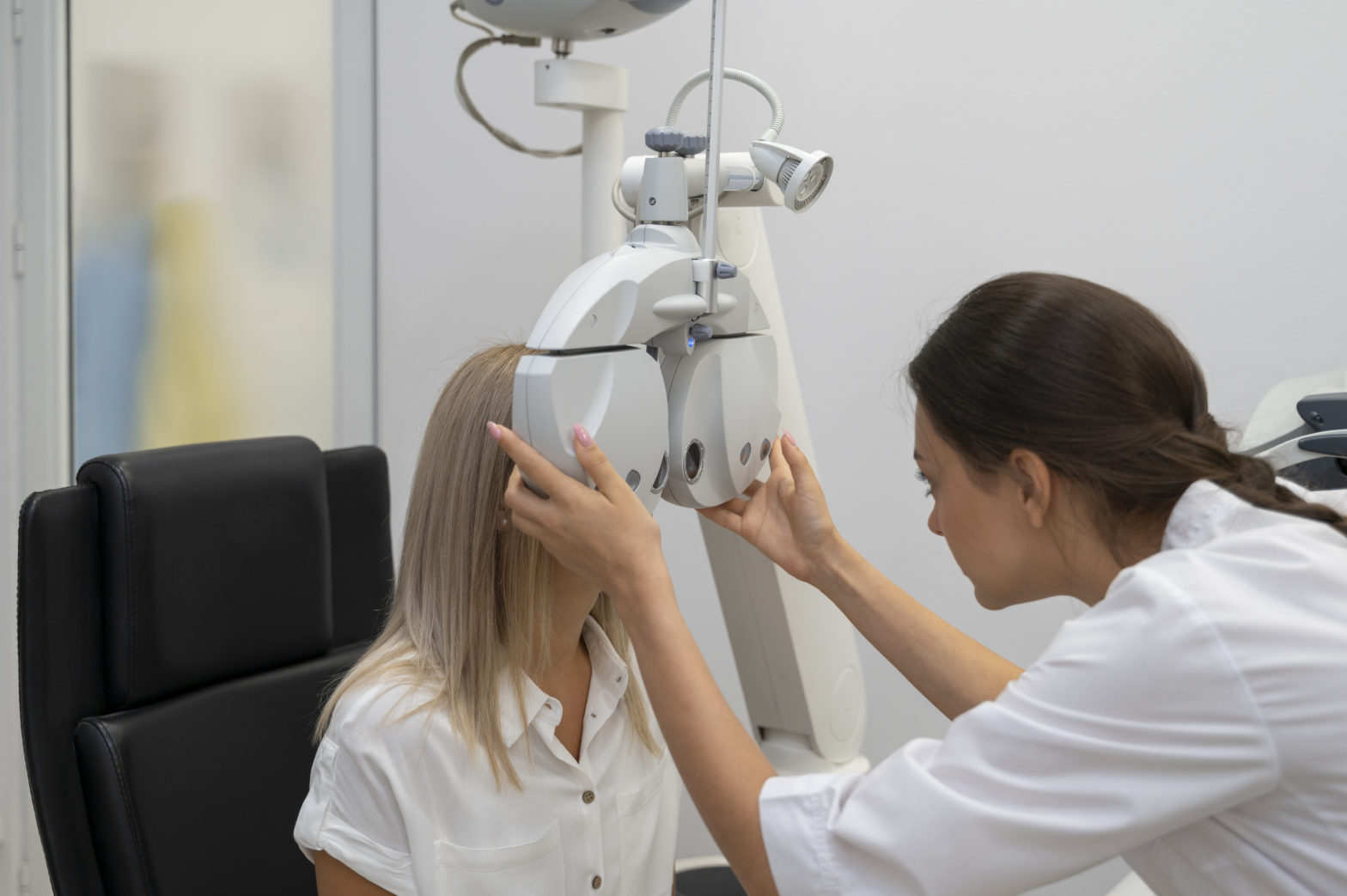- Home
- Treatments
- Refractive Surgery
Refractive Surgery
What is Refractive Surgery?
Refractive surgery is a surgical procedure performed to correct the refractive error (spectacle power) of the eye. It is usually done to get rid of or reduce dependence on glasses and contact lens . It can be performed in a patient with stable refraction (glass power) after the age of 18 – 21 years. Complete medical history along with detailed eye examination is mandatory in all candidates, special Investigations like corneal topography (Pentacam, Orbscan), Anterior segment Optical Coherence Tomography (ASOCT) are performed to evaluate the shape, thickness and curvature of the cornea and other dimensions of the eye. After acquiring all the details, the eye surgeon (ophthalmologist) makes a decision regarding the available options of refractive surgery for the patient.
The current refractive procedures can be classified as Corneal procedures and Lens based surgery.
Corneal procedures include laser assisted power correction and this can be further divided as 3 types
-
PRK (Photrefractive Keratectomy)
This procedure involves careful removal of the top most layer of the cornea also known as epithelium , this is followed by Excimer laser (wavelength 193 nm) delivery which reshapes the corneal surface – to correct the refractive power of the eye. A contact lens is placed for a few days to support the healing of the eye, the epithelium is very thin (50 microns) and usually grows back within 3 days.
-
LASIK (Flap Based Procedure)
This is a very popular procedure and involves creation of a flap (100-120 micron) in the superficial layer of the cornea. This flap can be created by two methods
-
Microkeratome :
This a small specialised blade that dissects the flap at the accurate depth, hence Microkertome assisted LASIK is also known as BLADE LASIK
-
Femtosecond laser (wavelength 1053nm) :
This is a specialised laser which creates a flap precisely at the desired depth , it is very different from Excimer laser described above and hence needs a separate machine for delivery. Femtosecond laser assisted LASIK is also known as FEMTO- LASIK.
After the flap is created by any of the above two methods, it is lifted and the residual bed is then treated with Excimer laser (same laser used in PRK). At the end of the procedure the flap is reposited back in place, on the corneal bed and patient is discharged with medication.
-
-
Refractive Lenticule Extraction – ReLEX SMILE / FLEX
This is the most advanced refractive surgery and requires only Femtosecond laser (same laser as described in FEMTO -LASIK). Refractive power of the eye is corrected by using femtosecond laser to create a lenticule (of predetermined size and thickness) within the layers of the cornea .This lenticule can then be extracted in two ways
-
Through a 4-5mm incision -this is called Femtosecond Lenticule Extraction (FLEX).
-
Through a very small 2mm incision – this is known as Small Incision Lenticule Extraction (SMILE)
Extraction of this lenticule results in altered shape of the cornea and corrects the refractive power. This surgery does not need Excimer laser, Microkeratome blade or flap hence it is popularly known as blade-less, flap-less refractive surgery.
-
Lens Based surgeries
Lens based surgeries involve ‘in the eye -intraocular’ procedures to correct the spectacle power. It can be further divided as
Implantable Collamer Lens (ICL)
This surgery involves placing an artificial implantable contact lens in front of the natural crystalline lens in the eye. ICL are made of biocompatible material known as collamer (combination of collagen + polymer) and are very different from disposable contact lenses that are used routinely.
Refractive lens exchange
In Refractive lens exchange the natural crystalline lens of the eye is removed and is replaced by an artificial intraocular lens (IOL) of the correct power. This procedure extracts the natural lens from the eye using Ultrasonic energy (Phacoemulsification) , hence there is no need of cataract surgery in the future. Femtosecond laser platform can be used to assist in refractive lens exchange procedure and this is popularly known as ROBOTIC -Refractive Lens Exchange.
All patients of refractive surgery are started on an antibiotic – steroid combination of eye drops along with lubricants and protective glasses. Close review of patients on post operative day 1, 3, 7 and 14 is mandatory along with regular follow-up after.

Do not ignore eye trouble!
Now you can reach our senior doctors by booking an online video consultation or a hospital appointment
Book an appointment now


